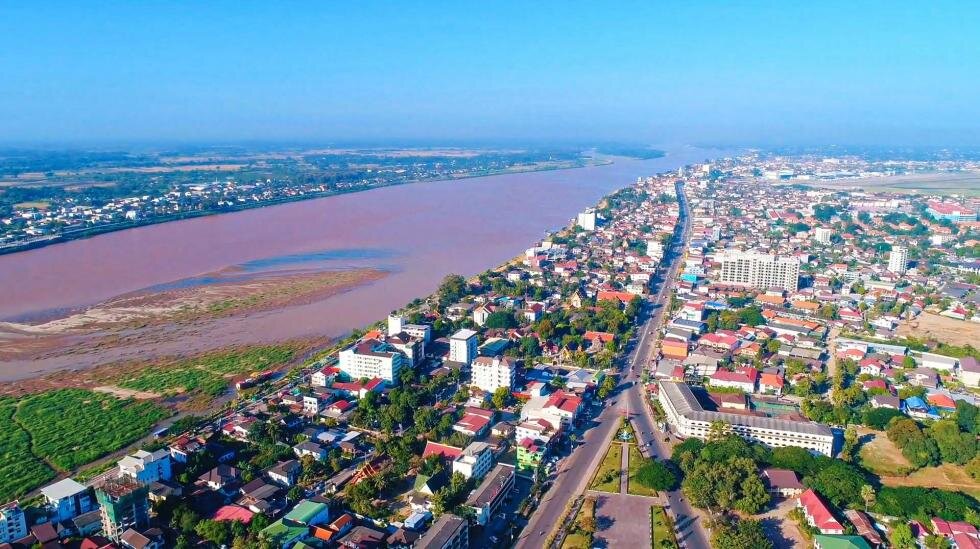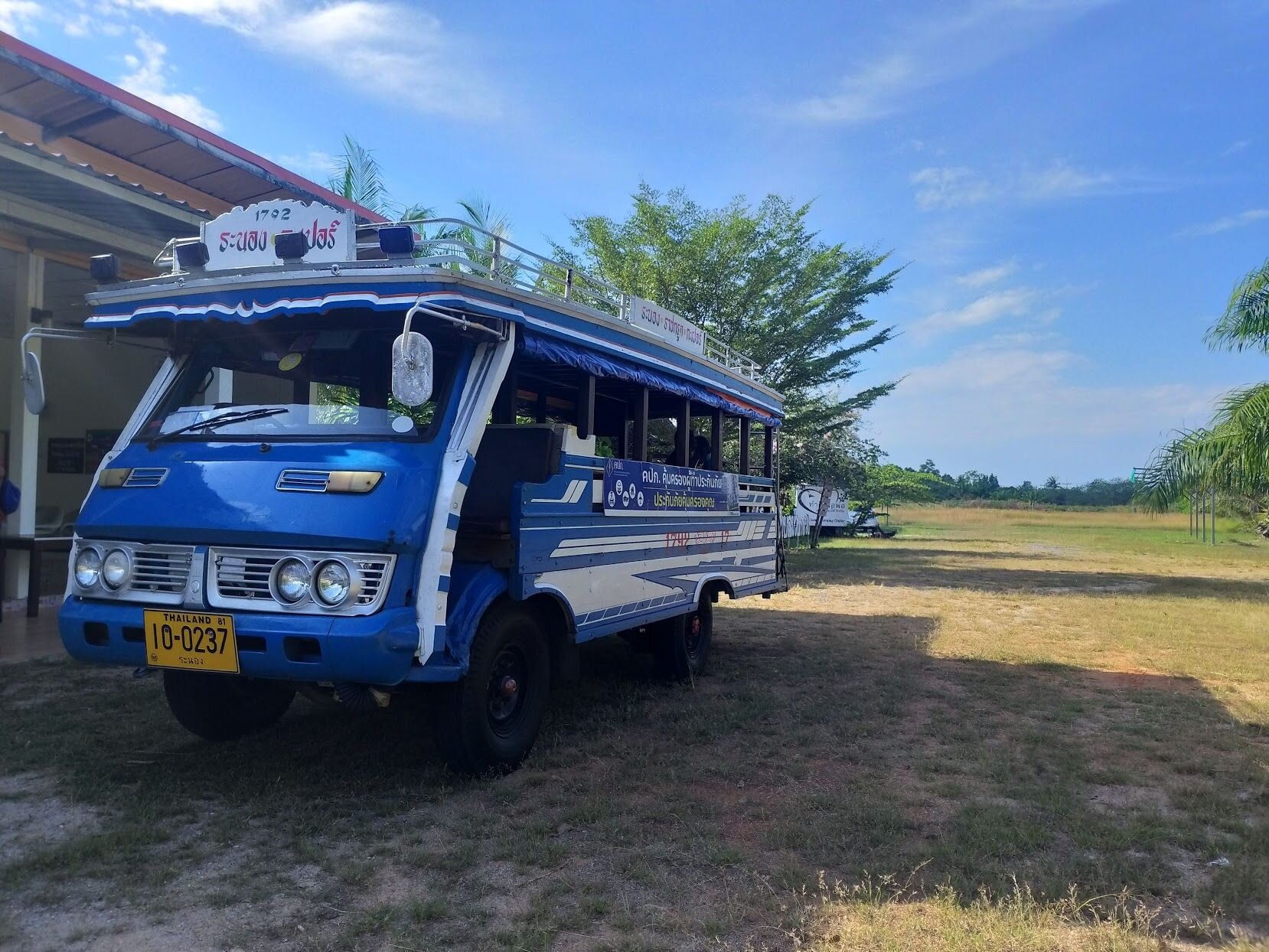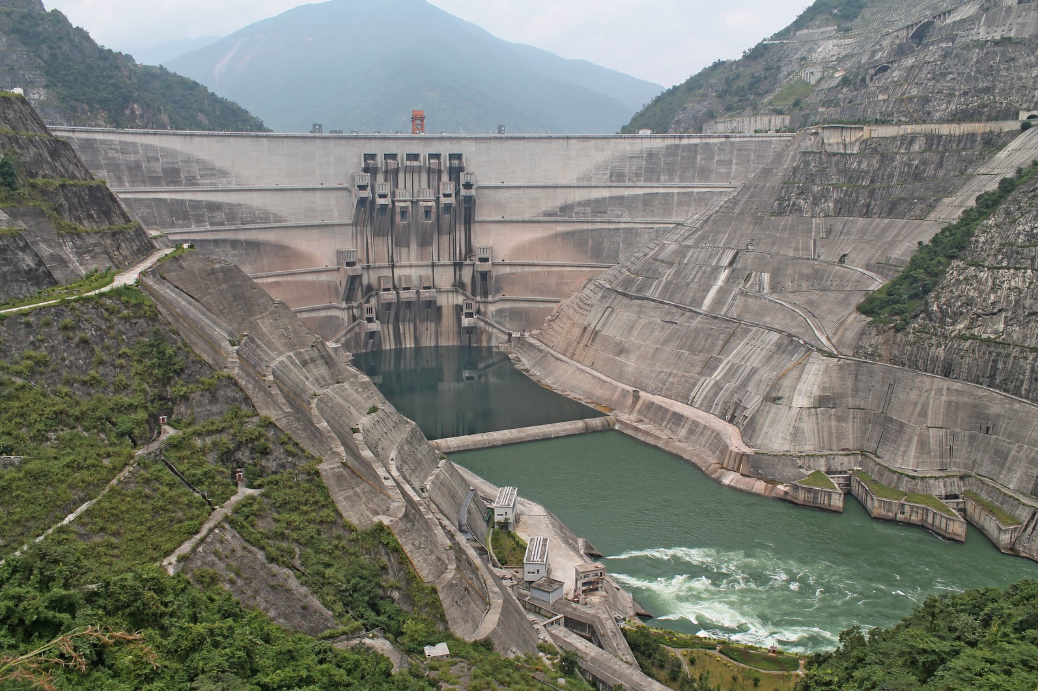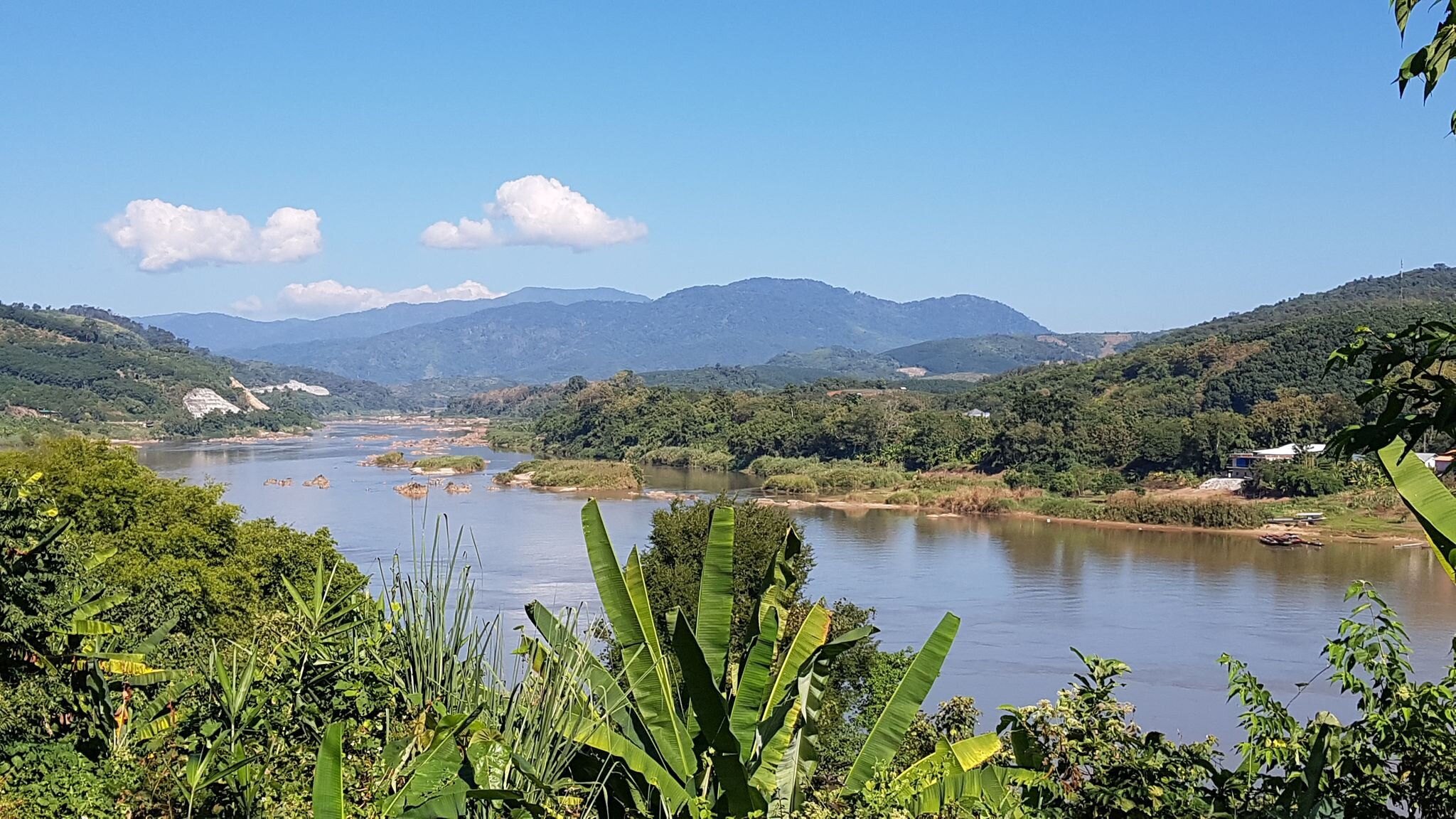ธรรมชาติเชิงวิพากษ์: การสร้างสันติภาพเชิงบวกจากระดับท้องถิ่นในภาคเหนือของประเทศไทย
/เรื่องโดย แอนดรูว์ สโตน*
[English version available here]
Photo (c) Andrew Stone, 2021.
Figure 1. Mekong River
แม่น้ำโขงได้กั้นพรมแดนไทย – ลาว ระยะทาง 97 กิโลเมตร ตามกระแสน้ำจากสามเหลี่ยมทองคำของพม่า ลาว และไทย ตั้งแต่กลางปี 2533 ชุมชนริมน้ำในภาคเหนือของประเทศไทยได้สร้างเขตอนุรักษ์โดยชุมชนและการเคลื่อนไหวทางสังคม พวกเขารับมือต่อทั้งสิ่งที่เกิดขึ้นแล้วตลอดจนผลกระทบทางนิเวศวิทยาการดำรงชีวิต สังคมและวัฒนธรรมที่เกี่ยวข้องกับโครงการพัฒนาต่างๆ บนแม่น้ำ สิ่งเหล่านี้รวมถึงแผนการระเบิดแก่งและเขื่อนไฟฟ้าพลังน้ำขนาดใหญ่
การเมืองของแม่น้ำโขงเป็นที่รู้จักกันดีทั้งกับนักวิชาการแม่น้ำโขงและประชาชนโดยทั่วไป ในบทความชิ้นนี้ผมได้ทำการวิเคราะห์โดยใช้กรอบตัวชี้วัดสันติภาพเชิงบวก (Positive Peace Index: PPI) เพื่อเสนอข้อมูลเชิงลึกใหม่ๆ เกี่ยวกับการขับเคลื่อนการตอบสนองของชุมชนต่อการพัฒนาและผลลัพธ์เชิงบวกและเชิงลบของการกระทำเหล่านั้น
มากกว่าการกำหนดนโยบายทางธุรกิจตามปกติ
โดยทั่วไปแล้วรัฐบาลจะใช้ทฤษฎีเศรษฐศาสตร์เพื่อกำหนดนโยบายการพัฒนาของตน พวกเขามักจะดิ้นรนเพื่อให้คุณค่าและรวมเอาผลประโยชน์และความต้องการของคนในท้องถิ่นมาใช้ในการตัดสินใจที่ส่งผลกระทบต่อพวกเขา การพึ่งพาซึ่งกันและกันของมนุษย์กับส่วนที่เหลือของโลกธรรมชาติก็เป็นเรื่องยากสำหรับนโยบายที่จะสามารถเข้าไปยึดครองได้เช่นกัน กลายเป็นที่ยอมรับมากขึ้นว่าการจัดการทรัพยากรน้ำและการแปรเปลี่ยนความขัดแย้งของน้ำนั้นจะต้องมีมากกว่าเรื่องคุณภาพน้ำ ปริมาณและการแบ่งสรร ยกตัวอย่างเช่น แนวทางการเชื่อมต่อของ น้ำ-พลังงาน-อาหาร (Water-Energy-Food Nexus)[i] ได้รับการพิจารณาในนโยบายและการวางแผนอย่างน้อยหนึ่งทศวรรษ ในขณะเดียวกัน การประเมินระบบนิเวศแห่งสหัสวรรษ 2005 (Millennium Ecosystem Assessment)[ii] บนพื้นที่ชุ่มน้ำและน้ำ ระบุว่าทั้งระบบ แนวทางข้ามภาคส่วนหรือตามระบบนิเวศมีแนวโน้มที่จะสร้างผลลัพธ์ที่ยั่งยืนตามเป้าหมายการพัฒนาที่ยั่งยืนของสหประชาชาติ (The UN Sustainable Development Goals: UNSDGs) และเป้าหมายการพัฒนาแห่งสหัสวรรษ (The Millennium Development Goals: MDGs) การพิจารณาตัวขับเคลื่อนการเปลี่ยนแปลงที่เป็นระบบควรรวมถึงสิ่งต่างๆ ดังต่อไปนี้
เงินทุนอุดหนุนการผลิต
การเปลี่ยนแปลงสภาพภูมิอากาศ
การบรรทุกสารอาหาร
ความล้มเหลวของตลาด
ขาดการมีส่วนร่วมของผู้มีส่วนได้ส่วนเสีย
การทวีความรุนแรงทางการเกษตรที่ไม่ยั่งยืน
ขาดการตัดสินใจของภาครัฐและภาคเอกชนที่โปร่งใสและมีความรับผิดชอบ
งานวิจัยชิ้นอื่นๆ พบว่า การดำเนินตาม UNSDG นั้นต้องมีความเข้าใจระบบสังคมนิเวศวิทยา[iii]. การทำความเข้าใจความสัมพันธ์ของชุมชนกับน้ำและปัจจัยขับเคลื่อนรวมถึงผลกระทบของการดำเนินการ CBO จำเป็นต้องมีมุมมองระบบแบบกว้างที่ให้ความสำคัญกับการจับปลาตามธรรมชาติและการทำมาหากินอื่นๆ ที่เชื่อมโยงกับกระแสน้ำหลากตามฤดูกาลของแม่น้ำ มุมมองนี้จะรวมถึงประเพณีวัฒนธรรมและจิตวิญญาณที่เสริมสร้าง "แนวทางการจัดการ" ตามฤดูกาลและเชื่อมโยงชุมชนทางสังคมและสถานที่ มันจะประเมินความยืดหยุ่นของสถาบันในท้องถิ่นนอกเหนือจากความสามารถของรัฐ
ดัชนีสันติภาพเชิงบวก
The ดัชนีสันติภาพเชิงบวก (Positive Peace Index: PPI)[iv] เป็นกรอบที่ส่งเสริมให้เกิดความสมบูรณ์จากสิ่งที่เกริ่นมาทั้งหมดข้างต้น มันถูกสร้างและดูแลโดยสถาบันเศรษฐศาสตร์และสันติภาพ ดัชนีนี้สามารถช่วยระบุตัวขับเคลื่อนและผลลัพธ์ของความพยายามในการกำหนดนโยบายโดยชุมชน
สันภาพเชิงบวกเป็นมากกว่าการปราศจากสงครามนั่นคือ “ทัศนคติ สถาบันและโครงสร้างที่รังสรรค์และจรรโลงสังคมที่สงบสุข” สันติภาพเชิงบวก “เปลี่ยนจุดศูนย์รวม...ไปสู่ด้านบวกที่สร้างเงื่อนไขให้สังคมเจริญรุ่งเรือง”[v] ประเทศอาจเสี่ยงต่อความไร้เสถียรภาพและความรุนแรงอันเนื่องมาจากการคอร์รัปชั่น ความไม่เท่าเทียม การละเมิดสิทธิมนุษยชนและเหตุผลอื่นๆ ที่เกี่ยวข้อง เงื่อนไขเหล่านี้จะส่งผลให้คะแนนของสันติภาพเชิงบวกไม่ค่อยดีเท่าไหร่นัก คะแนนสันติภาพเชิงบวกที่ดีนั้นมีความเกี่ยวพันกันกับความยืดหยุ่นต่อเศรษฐกิจและภัยธรรมชาติ ผลลัพธ์ด้านสิ่งแวดล้อมที่ดีขึ้นและระดับคะแนนที่ดีขึ้นสำหรับเป้าหมายด้านคุณภาพชีวิตและการพัฒนา
สถานบันเศรษฐศาสตร์และสันติภาพได้รวบรวมข้อมูลปัจจุบันจากดัชนีชุดข้อมูลและแบบสำรวจกว่า 24,700 รายการเพื่อสร้างและปรับปรุงพัฒนาสันติภาพเชิงบวก “แกนหลัก”ของสันติภาพเชิงบวกทั้ง 8 ได้มีการสรุปไว้ในตารางที่ 1 ในการวิเคราะห์ต่อไปนี้ “(+P1)” ระบุถึงตัวอย่างของความเข้มแข็งในแกนที่ 1 (รัฐบาลที่ทำหน้าที่ที่ดี) ในขณะที่ “(-P1)” หมายความว่าผู้ดำเนินการที่ให้ข้อมูลนั้นรับรู้ถึงการขาดดุลในแกนที่ 1
ตารางที่ 1: แกนหลักแห่งสันติภาพเชิงบวก 8 ประการ
P1. รัฐบาลที่ทำหน้าที่ที่ดี – ให้บริการที่มีคุณภาพ สร้างความไว้วางใจและการมีส่วนร่วม การแสดงให้เห็นถึงเสถียรภาพทางการเมืองและดำรงไว้ซึ่งหลักนิติธรรม
P2. สภาพแวดล้อมทางธุรกิจที่ดี – สภาพเศรษฐกิจที่เข้มแข็งและสถาบันที่สนับสนุนภาคเอกชน ความสามารถในการแข้งขันทางธุรกิจและผลผลิตทางเศรษฐกิจ
P3. การกระจายทรัพยากรที่เป็นธรรม – การเข้าถึงการศึกษา สุขภาพ และรายได้
P4. การยอมรับในสิทธิของคนอื่น – รับประกันสิทธิและเสรีภาพขั้นพื้นฐานของมนุษย์และบรรทัดฐานทางสังคมและวัฒนธรรมที่ไม่เป็นทางการสำหรับพฤติกรรมของพลเมือง
P5. ความสัมพันธ์อันดีกับเพื่อนบ้าน – ความสัมพันธ์กับรัฐอื่นๆ ที่มีความสัมพันธ์กับเงื่อนไขภายในประเทศ
P6. การไหลเวียนของข้อมูลข่าวสาร – สื่อที่เสรีและเป็นอิสระในการเผยแพร่ข้อมูลเพื่อให้ภาคประสังคมสามารถตัดสินใจได้ดีขึ้นและมีการตอบสนองต่อวิกฤติอย่างมีเหตุผล
ทุนทางสังคม
P7. ระดับของทุนทางมนุษย์ – สะท้อนให้เห็นถึงขอบเขตที่สังคมส่งเสริมการศึกษา ความรู้ ผลผลิต เยาวชน การมีส่วนร่วมทางการเมืองและ
P8. การคอร์รัปชั่นระดับต่ำ – ส่งเสริมและจัดสรรทรพยากรอย่างมีประสิทธิภาพ เงินทุนสำหรับการบริการที่จำเป็นและความมั่นคงของพลเรือน การคอร์รั่ปชั่นระดับต่ำที่จะช่วยเพิ่มความไว้วางใจในสถาบันมากขึ้น
คะแนนสันติภาพเชิงบวกของกลุ่มประเทศลุ่มแม่น้ำโขงตามที่กำหนดโดยสถาบันเศรษฐศาสตร์และสันติภาพที่แสดงไว้ในตารางที่ 2 คะแนนดัชนีอยู่ระหว่าง 1 ถึง 5 ระดับคะแนนที่สูงขึ้นมีความสัมพันธ์กับความเสี่ยงที่จะเกิดความรุนแรงที่สูงกว่าและระดับคะแนนที่ต่ำกว่าแสดงให้เห็นว่าเป็นสิ่งที่ตรงกันข้าม ในแง่ของการจัดอันดับทั่วโลกประเทศลุ่มแม่น้ำโขงอยู่ระหว่าง 66 ถึง 131 จากทั้งหมด 163 ประเทศ
ดัชนีสันติภาพเชิงบวกไม่ได้ครอบคลุมเนื้อหาเป็นวงกว้างแต่คุณค่าอย่างหนึ่งที่สำคัญคือ มันเป็นแบบข้ามภาคส่วน (Cross – Sectoral) อีกประการหนึ่งก็คือว่ามีพื้นฐานมาจากเศรษฐศาสตร์กระแสหลักและข้อมูลที่อ้างอิงตามหลักฐาน สิ่งนี้สอดคล้องกับแนวทางที่รัฐบาลคุ้นเคยและทำให้ดัชนีรวมเข้ากับการกำหนดนโยบายได้ง่าย แม้ว่าจะเป็นดัชนีระดับรัฐแต่ก็สะท้อนแง่มุมของความเป็นจริงในแต่ละวันที่อยู่ในชุมชนและที่สำคัญยังพยายามอย่างเปิดเผยที่จะเปิดช่องให้แก่ทฤษฎีการเปลี่ยนแปลงทางสังคม[vi]
การดำเนินการโดยชุมชนมีแนวโน้มที่จะยกระดับความเข้มแข็งให้แก่แกนหลักและการดำเนินการเพื่อปรับปรุง เสรีภาพในการยื่นคำร้องประท้วงหรือเจรจากับรัฐบาลอาจสะท้อนถึงความเข้มแข็งในแกนหลัก (+P1,P4,P6,P7) ชุมชนอาจใช้จุดแข็งเหล่านั้นเพื่อตอบสนองความต้องการข้อมูล (-P6) การดำรงชีวิตที่เท่าเทียมกัน (-P3) การมีส่วนร่วมอย่างมีความหมาย (-P1) ความยุติธรรม (-P4) หรือการลดการคอร์รัปชั่น (-P8)
กรณีศึกษาที่ 1: การระเบิดแก่งแม่น้ำโขง
ข้อตกลงว่าด้วยการเดินเรือพาณิชย์ในแม่น้ำล้านซาง – แม่โขง ได้ลงนามในปี 2543 ระหว่างรัฐบาลจีน เมียนมา ลาว และไทย[vii] จีนได้วางแผนการปรับเปลี่ยนร่องน้ำหลักเพื่อการเดินเรือขนาดใหญ่รวมไปถึงการระเบิด ขุดลอกและปรับเปลี่ยนร่องน้ำตามแนวแม่น้ำโขงรวมถึงชายแดนไทย - ลาว ทางตอนเหนือซึ่งมีระยะทางทั้งสิ้น 97 กิโลเมตร
ในปีเดียวกันนั้น กระทรวงการพัฒนาสังคมและความมั่นคงของมนุษย์ได้จัดตั้งสถาบันพัฒนาองค์กรชุมชน (องค์การมหาชน) (พอช.) โดยการให้สิทธิ์การเข้าถึงเงินทุนสนับสนุนขนาดเล็กแก่องค์กรชุมชน (Community – based Organizations: CBOs) ซึ่งรวมถึงองค์กรต่างๆ ที่ดำเนินกิจกรรมในทางภาคเหนือของประเทศไทย[viii] นี่คือตัวอย่างนโยบายของรัฐบาลที่สนับสนุนแกนหลักหลายประการของดัชนีสันติภาพเชิงบวก (+P1,P4,P7)
ในช่วง 2 ทศวรรษที่ผ่านมา คนในท้องถิ่นที่อาศัยอยู่ติดกับแม่น้ำโขงรายงานว่าพวกเขาถูกกีดกันจากการเข้าร่วมในกระบวนการตัดสินใจ (-P1) และการขาดซึ่งรายละเอียดโครงการการเดินเรือในที่ดินของรัฐ (-P6) เขื่อนต้นน้ำในประเทศจีนผลกระทบต่อการไหลของน้ำตามฤดูกาล[ix] สวนริมฝั่งแม่น้ำและระบบนิเวศวิทยาของปลา ผู้คนหวาดกลัวกับการทำมาหากินแบบดั้งเดิมที่พึ่งพาแม่น้ำโขงจะได้รับผลกระทบมากขึ้น (-P3,P4) การแข่งขันทางเศรษฐกิจที่เป็นไปได้จากเรือบรรทุกสินค้าและการลงทุนของจีน (-P2) และการเข้าถึงเรือสำหรับกองทัพเรือจีนที่เพิ่มขึ้นก็สร้างความกังวลเช่นกัน[x]
ตลอดระยะเวลานี้ โครงการพัฒนาองค์กรชุมชนของไทยได้มุ่งเน้นไปที่สิทธิของประชาชนและการพึ่งพากันและกันกับระบบธรรมชาติ ในปี 2560 พวกเขาได้ดำเนินการต่อต้านโครงการการสร้างเขื่อนไฟฟ้าพลังน้ำปากแบงที่ได้ถูกนำเสนอในภาคเหนือของลาว แง่มุมของแผนการสร้างเขื่อนทับซ้อนกับข้อเสนอการเดินเรือและส่งผลกระทบโดยตรงต่อชุมชนเดียวกันหลายแห่ง มีการเสนอการประชุมระหว่างบริษัทวิศวกรรมเขื่อนรัฐบาลจีน ตัวแทนรัฐบาลลาวและไทย ตลอดถึงผู้นำหมู่บ้านในพื้นที่ องค์กรชุมชนได้ใช้อำนาจทางสังคมและการเมือง (+P7) เพื่อยืนยันที่จะพบปะในระดับเดียวกันในพื้นที่เปิดโล่งริมฝั่งแม่น้ำโขง กระบวนการนี้ช่วยเสริมรัฐบาลที่ดี (+ P1) และสิทธิในท้องถิ่น (+ P4)
ในการประชุมผู้เชี่ยวชาญด้านวิชาการระดับภูมิภาคได้ให้ข้อมูลและความคิดเห็น และสื่อทั้งในและต่างประเทศให้ครอบคลุมมุมมองของคนในพื้นที่ (+P6) เจ้าหน้าที่ท้องถิ่นและผู้ปฏิบัติงานภาคความมั่นคง (ทหารและตำรวจ) ร่วมเป็นสักขีพยานในการประชุม ในขณะที่การประชุมครั้งนี้ถือเป็นครั้งแรกในภูมิภาคที่โดดเด่น การมีส่วนร่วมของผู้มีเกี่ยวข้องหลายภาคส่วนซึ่งพยายามแก้ไขความไม่สมดุลของอำนาจและขยายมุมมองท้องถิ่นเป็นเรื่องปกติของกลยุทธ์ที่ครอบคลุมของการรณรงค์องค์กรชุมชน 20 ปี ตัวอย่างเช่น การเดินสันติภาพ 2 ครั้งก่อนหน้านี้ตามแนวชายแดนไทย - ลาว ระยะทาง 97 กิโลเมตร ยังได้เชื่อมโยงชุมชนท้องถิ่น เจ้าหน้าที่รัฐ ผู้นำทางจิตวิญญาณ กลุ่มชาติพันธุ์และกลุ่มผู้มีส่วนได้ส่วนเสียอื่นๆ จำนวนมากจากพื้นที่ทางภูมิศาสตร์เดียวกัน[xi]
ในเดือนมกราคม 2562 หลังจากหลายทศวรรษแห่งแรงกดดัน รัฐบาลไทยได้ดำเนินการจัดประชุมสาธารณะเกี่ยวกับโครงการเดินเรือที่สำนักงานเขตที่ได้รับผลกระทบทั้ง 3 แห่ง (+P1,P6)[xii] ข้อคิดเห็นของสาธารณะชนต่อต้านโครงการนี้อย่างรุนแรงและได้รับการเผยแพร่สู่สาธารณะในระดับสากล[xiii] ในช่วงต้นปี 2563 ประเทศไทยได้ยกเลิกโครงการระเบิดและขุดลอกแม้ว่าจะยังคงมีข้อตกลงในการเดินเรือที่กว้างขึ้น[xiv] ดูเหมือนว่าการตัดสินใจจะขึ้นอยู่กับความกังวลภายในของรัฐบาบอย่างน้อยส่วนหนึ่ง ดังนั้นการต่อต้านของสาธารณชนจึงเหมาะสมและเป็นประโยชน์ (+P1,P7)[xv]
กรณีศึกษาที่ 2: โครงการอนุรักษ์ท้องถิ่น
แม่น้ำอิง เป็นลำน้ำสาขาสำคัญของแม่น้ำโขงในภาคเหนือของประเทศไทยที่ไหลผ่านจังหวัดพะเยาและเชียงราย เขตอนุรักษ์ท้องถิ่นหลายแห่งและสภาประชาชนลุ่มน้ำอิงก่อตั้งขึ้นโดยองค์กรชุมชนในลุ่มน้ำอิงในช่วง 2 ทศวรรษที่ผ่านมาเพื่อส่งเสริมให้ท้องถิ่นมีส่วนร่วมในการจัดสรรและอนุรักษ์อย่างยั่งยืนริมแม่น้ำอิง (+P7)[xvi] ปัญหาระดับลุ่มน้ำ เช่นการชลประทานและการใช้ที่ดินถูกระบุว่าก่อให้เกิดผลกระทบเชิงลบต่อเกษตรกรและชาวประมงรวมถึงการระบายน้ำทิ้งตามฤดูกาลของแม่น้ำอิง (-P3)
ในช่วงเวลาเดียวกัน การค้าแม่น้ำโขงกับจีน การสร้างสะพานแห่งใหม่สู่ลาวในปี 2556 และปัจจัยอื่นๆ ทำให้รัฐบาลไทยกำหนดเขตเศรษฐกิจพิเศษ (Special Economic Zone: SEZ) ใน 3 อำเภอชายแดนแม่น้ำโขงทางตอนเหนือของจังหวัดเชียงราย (P2) โดยปกติเขตเศรษฐกิจพิเศษจะมีการตรวจสอบอย่างรวดเร็วและการยกเว้นกฎระเบียบ ในขณะเดียวกันก็เสนอสิ่งจูงใจในการลงทุนอื่นๆ ในเวลาเดียวกัน ชุมชนในภาคเหนือของประเทศไทยก็รู้สึกกดดันที่จะเพิ่มความหนาแน่นในการทำการเกษตรและหารายได้เพิ่มเติมด้วยเหตุผลหลายประการที่เชื่อมโยงกับนโยบายการเกษตรของประเทศ การเพิ่มขึ้นของประชากรและการลดลงของการประมง (-P1, P3)[xvii]
นโยบายแห่งชาติปกป้องเนินเขาสูงชัน (+P1) การทำการเกษตรแบบเร่งรัดได้ครอบครองพื้นที่ลุ่มต่ำเป็นที่เรียบร้อยแล้ว ด้วยเหตุนี้ ผู้กำหนดนโยบายจึงให้ความสำคัญกับป่าชุมชนแบบดั้งเดิมและพื้นที่ชุ่มน้ำตามฤดูกาลซึ่งเป็นเพียงพื้นที่เดียวที่ยังคง "เปิด" สำหรับการพัฒนาเศรษฐกิจ (P2) ในปี 2558 มีการเสนอสวนอุตสาหกรรม (สวนอุตสาหกรรม หรือ Industrial Park คือพื้นที่อุตสาหกรรมการผลิตขนาดใหญ่ - ผู้แปล) ในพื้นที่ชุ่มน้ำตามฤดูกาลในพื้นที่กักเก็บน้ำที่อยู่ใกล้บุญเรือง เรื่องนี้กลายเป็นกรณีที่มีรายละเอียดสูง พื้นที่นี้เคยเป็นแหล่งที่อยู่อาศัยของปลา เห็ด และการจับสัตว์ป่าอื่นๆ และการทำมาหากินตามวิถีชีวิตของชุมชน (+P3) แม้ว่าพื้นที่จะอยู่ภายใต้แรงกดดันในการพัฒนาท้องถิ่นเพื่อการรื้อถอนไม้และข้อเสนอการแปลงพื้นที่เพาะปลูกสำหรับสวนอุตสาหกรรมเพื่อตอบสนองต่อข้อสงสัยของคนในท้องถิ่น ชาวบ้านตั้งคำถามถึงผลประโยชน์ทางเศรษฐกิจที่อาจจะเกิดขึ้น (P2) และความเท่าเทียมกันในการแจกจ่ายสิ่งเหล่านั้น (P3) หลังจากการคัดค้านแผนเขตเศรษฐกิจพิเศษอย่างมีนัยสำคัญ ข้อตกลงการอนุรักษ์ป่าชุมชนถูกทำให้เป็นทางการแทน ในปี 2563 พื้นที่ชุ่มน้ำตามฤดูกาลของป่าบุญเรืองได้รับรางวัลสิ่งแวดล้อมระดับโลก UNDP Equator Prize ซึ่งตระหนักถึงคุณค่าของความสำเร็จนี้ และชุมชนโดยรอบถือว่าการแสวงหาสถานะของเขตอนุรักษ์ป่าบุญเรืองเป็นพื้นที่ชุ่มน้ำที่มีความสำคัญระดับโลกภายใต้อนุสัญญาแรมซาร์ (Ramsar Convention) ระหว่างประเทศ[xviii]
Photo (c) Andrew Stone, 2021.
บทสรุป: การมีส่วนร่วมในท้องถิ่นเพื่อสันติภาพเชิงบวก
ตั้งแต่กลางทศวรรษ 1990 ประเทศไทยประสบกับวิกฤตการเงินครั้งใหญ่หลายครั้ง การรัฐประหารโดยกองทัพ 2 ครั้ง การเปลี่ยนแปลงรัฐธรรมนูญ 2 ครั้ง และปัจจัยอื่น ๆ ที่ส่งผลให้เกิดความไม่มั่นคงทางการเมืองและสังคมตลอดจนความขัดแย้ง อาจจะดูเหมือนว่าขัดแย้งกันในกลุ่มผู้ซึ่งไม่เห็นด้วยอย่างกระตือรือร้น เช่น กลุ่มองค์กรชุมชนในภาคเหนือของประเทศไทยที่มีส่วนช่วยทำให้เกิดสันติภาพเชิงบวกโดยเฉพาะอย่างยิ่งในบริบทที่มีความเสี่ยงอย่างแท้จริงของขัดแย้งที่รุนแรงในบางกรณี จากการวิเคราะห์ข้างต้น ผมสรุปได้ว่าพวกเขาเหล่านั้นได้ยกระดับจุดแข็งของแกนหลักของดัชนีสันติภาพเชิงบวกเพื่อสร้างพื้นที่ทางการเมืองและขีดความสามารถในการมีส่วนร่วมสำหรับท้องถิ่นมากขึ้นและยังได้รับการสนับสนุนเงินทุนบางส่วนจากรัฐผ่านสถาบันพัฒนาองค์กรชุมชน (องค์การมหาชน) สิ่งนี้อาจดูเหมือนขัดแย้งกับความจำเป็นซึ่งหลีกเลี่ยงไม่ได้ของผู้กำหนดนโยบายจากบนลงล่าง (top-down policy maker) อย่างไรก็ตามการรวมตัวกันของการกระทำเหล่านี้ที่เกิดขึ้นอย่างต่อเนื่องมานานหลายทศวรรษมีแนวโน้มที่จะต่อต้านความไม่มั่นคงโดยการสนับสนุนเงื่อนไขในท้องถิ่น นโยบายระดับชาติ และความสัมพันธ์ระดับท้องถิ่นกับรัฐบาลแห่งชาติที่มีความเทียบเคียงกับระดับคะแนนดัชนีสันติภาพเชิงบวกที่ดี
องค์กรชุมชนเหล่านี้ยังผลักดันให้เกิดวิธีคิดใหม่ๆ เกี่ยวกับนโยบาย พวกเขาเน้นความสัมพันธ์แบบพึ่งพาซึ่งกันและกันระหว่างผู้คนและธรรมชาติในการอภิปรายเกี่ยวกับนโยบายและพวกเขาเสนอแนวทางต่างๆ เช่น การรวมสิทธิธรรมชาติไว้ในนโยบาย[xix] รายงานทางวิชาการและองค์กรต่างๆ ตลอดรวมถึงการจัดประชุมสาธารณะได้เพิ่มความชอบธรรมให้กับแนวคิดเหล่านั้น ดังที่นักวิชาการนามว่า Joanne Barker ได้ตั้งข้อสังเกต น้ำ “สอนให้เราคิดเกี่ยวกับองค์ความรู้ในการเคลื่อนที่อย่างต่อเนื่อง” และ “ให้ความสำคัญกับการเชื่อมต่อและปฏิสัมพันธ์ระหว่างน้ำ ดินและอากาศ ระหว่างมนุษย์และสิ่งอื่นที่ไม่ใช่มนุษย์”[xx]
การปรับกรอบนโยบายและการกำหนดมุมมองของระบบเป็นสิ่งสำคัญ การสร้างสิทธิในธรรมชาติและความเป็นประชาธิปไตยของการจัดการในกฎหมายและวัฒนธรรมต้องใช้ความพยายามอย่างต่อเนื่อง หากนโยบายคือการสร้างเงื่อนไขให้สังคมเจริญแล้ว [xxi] แนวทางในการกำหนดนโยบายจะต้องอำนวยความสะดวกในการทำความเข้าใจและตั้งสมมติฐานเกี่ยวกับ 1). อำนาจ เช่น ความเคารพต่อมนุษย์ และ 2). ธรรมชาติของความสัมพันธ์ เช่น การเคารพใน 'ธรรมชาติ' และการพึ่งพาซึ่งกันและกันของมนุษย์กับส่วนอื่นๆ ของโลกธรรมชาติ องค์กรชุมชนที่ได้รับข้อมูลและการสนับสนุนได้มีการยกประเด็นเหล่านี้และประเด็นอื่นๆ ที่เกี่ยวข้องกับการเชื่อมต่อกันระหว่าง น้ำ – พลังงาน - อาหาร[xxii] และคำแนะนำการประเมินระบบนิเวศแห่งสหัสวรรษ (Millennium Ecosystem Assessment)[xxiii]
การนำดัชนีสันติภาพเชิงบวกมาใช้เป็นกรอบสำหรับผลการวิเคราะห์นโยบายในการตระหนักถึงคุณค่าของการมีส่วนร่วมที่สำคัญขององค์กรชุมชนต่อความมั่นคง สังคมที่เท่าเทียมกันด้วยความสามารถระดับสูงของมนุษย์และความสัมพันธ์เชิงบวกมิฉะนั้นแล้วการกระทำขององค์กรชุมชนเหล่านั้นอาจถูกมองโดยผู้กำหนดนโยบายว่าเป็นอุปสรรคต่อการบรรลุสิ่งสำคัญของการวางแผนที่ได้กำหนดไว้ในระดับชาติ ดัชนีสันติภาพเชิงบวกมีช่องว่างบางอย่างที่ต้องใช้วิวัฒนาการเพิ่มเติมในการเป็นเครื่องมือหรือการประยุกต์ใช้การวิเคราะห์เพิ่มเติมพร้อมกัน การประเมินมูลค่าทางจิตใจ เศรษฐกิจที่ไม่ใช่เงินสดและคุณค่าทางจิตวิญาณไม่ได้มีการปรากฎอย่างเปิดเผยในกรอบดัชนีสันติภาพเชิงบวก และคำศัพท์ดัชนีสันติภาพเชิงบวก เช่น “ทุนมนุษย์” ไม่ได้สะท้อนถึงความเข้าใจของคนในท้องถิ่นเกี่ยวกับขีดความสามารถและความสัมพันธ์ของมนุษย์อย่างเต็มที่แต่ดัชนีสันติภาพเชิงบวกสามารถช่วยให้ความชัดเจนแก่ผู้กำหนดนโยบายถึงสิ่งที่ผลักดันการดำเนินการของชุมชนและการแสดงความจำนงนี้ให้ความกระจ่างและตระหนักรู้ถึงบทบาทสำคัญขององค์กรชุมชนในการสร้างสันติภาพเชิงบวกจากระดับท้องถิ่น
——-
*แอนดรูว์ สโตน เป็นนักระบบนิเวศวิทยา นักการศึกษาและพันธมิตรสันติภาพของโรตารี (Rotary Peace Follow) มีพื้นที่ทำงานอยู่ในลุ่มแม่น้ำโคลัมเบีย ประเทศสหรัฐอเมริกา ในทุกๆ ปีเขาจะใช้เวลา 3 เดือน เริ่มตั้งแต่ปี 2554 ในกลุ่มประเทศลุ่มแม่น้ำโขงตอนล่างในการสนับสนุนองค์กรชุมชนและเครือข่ายโดยให้ความสำคัญกับแม่น้ำและการพัฒนา
[i] Simpson, G. and G.P.W. Jewitt (2019, February). The Development of the Water-Energy-Food Nexus as a Framework for Achieving Resource Security: A Review. Front. Environ. Sci., (8). https://doi.org/10.3389/fenvs.2019.00008
[ii] Millennium Ecosystem Assessment (2005). Ecosystems And Human Well-Being: Wetlands And Water Synthesis. World Resources Institute, Washington, DC. https://www.millenniumassessment.org/documents/document.358.aspx.pdf (Accessed 20 November, 2020.)
[iii] Masterson, V. A., R. C. Stedman, J. Enqvist, M. Tengö, M. Giusti, D. Wahl, and U. Svedin. (2017). The contribution of sense of place to social-ecological systems research: a review and research agenda. Ecology and Society 22(1):49. https://doi.org/10.5751/ES-08872-220149
[iv] Institute for Economics & Peace (2019). Positive Peace Report 2019: Analysing the Factors that Sustain Peace. IEP, Sydney. https://www.visionofhumanity.org/wp-content/uploads/2020/10/PPR-2019-web.pdf (Accessed 16 February, 2020.)
[v] Ibid, 10.
[vi] Ibid, 10.
[vii] Agreement on Commercial Navigation on Lancang-Mekong River among the Governments of the People’s Republic of China, the Lao People’s Democratic Republic, the Union of Myanmar and the Kingdom of Thailand (April 2000). https://www.jcccn.org/images/rule/Agreement.pdf (Accessed 16 February, 2020.)
[viii] Community Organizations Development Institute (date unknown). Finding new ways for government to support communities at scale. https://en.codi.or.th/about/history-of-codi/ (Accessed 20 November, 2020.)
[ix] Lu, X.X. and R. Y. Siew (2006). Water discharge and sediment flux changes over the past decades in the Lower Mekong River. Hydrol. Earth Syst. Sci., 10, 181–195, 2006. Retrieved from https://www.hydrol-earth-syst-sci.net/10/181/2006/hess-10-181-2006.pdf (Accessed 23 November, 2020.)
[x] AFP (2020). The 97km that frustrate China's mastery of the Mekong. Bangkok Post. https://www.bangkokpost.com/world/1832839/the-97kms-that-frustrate-chinas-mastery-of-the-mekong (Accessed 16 February, 2020.)
[xi] Author interviews with Noparat Lamun (local organizer), Dr. Apisom Intralawan (MaeFahLuang University), and Dr. Carl Middleton (Chulalongkorn University) in November 2020 supplemented by personal field notes and prior interviews from 2009 to 2020.
[xii] Deetes, P. (2019, January 4). Sudden Public Hearing on Mekong “Rapids-Blasting” Project Catches Community Group by Surprise. CTN News. https://www.chiangraitimes.com/featured/sudden-public-hearing-on-mekong-rapids-blasting-project-catches-community-group-by-surprise/ (Accessed 16 February, 2021.)
[xiii] Stone, A. (2019, January 28). Chinese company consults locals over Mekong blasting. China Dialogue. https://www.chinadialogue.net/article/show/single/en/11040-Chinese-company-consults-locals-over-Mekong-blasting (Accessed 20 November, 2020.)
[xiv] Thepgumpanat, P. (2020). Thailand scraps China-led project to blast open Mekong River. Reuters. https://www.reuters.com/article/us-thailand-china/thailand-scraps-china-led-project-to-blast-open-mekong-river-idUSKBN1ZZ1T6 (Accessed 16 February, 2020.)
[xv] Author interviews.
[xvi] Wajjwalku, S. (2019). Chapter 6 Civil Society and Water Governance in Northern Thailand: Local NGOs and Management of Mekong’s Tributaries in Chiang Rai. In K. Otsuka (Ed.), Interactive Approaches to Water Governance in Asia (1st ed., pp. 123-154). Springer Nature Singapore Pte Ltd. https://doi.org/10.1007/978-981-13-2399-7.
[xvii] Author interviews.
[xviii] RECOFTC (2020, June). Boon Rueang Wetland Forest Conservation Group of Thailand wins global environmental award: The Equator Prize. https://www.recoftc.org/press-releases/boon-rueang-wetland-forest-conservation-group-thailand-wins-global-environmental (Accessed 26 November, 2020.)
[xix] Author interviews.
[xx] Barker, J. (2019). Confluence: Water as an Analytic of Indigenous Feminisms. American Indian Culture and Research Journal, 43:3. https://doi.org/10.17953/aicrj.43.3.barker
[xxi] Institute for Economics & Peace (2019).
[xxii] Simpson (2019).
[xxiii] Millennium Ecosystem Assessment (2005).
Figures, Tables, Photos
Figure 1: Product of the Transboundary Freshwater Dispute Database, College of Earth, Ocean, and Atmospheric Sciences, Oregon State University. Additional information about the TFDD can be found at: http://transboundarywaters.science.oregonstate.edu. Retrieved from https://transboundarywaters.science.oregonstate.edu/database-and-research/galleries/asia- gallery (Accessed 16 February, 2021.)
Figure 2: Basemap data from Esri, DigitalGlobe, GeoEye, i-cubed, USDA FSA, USGS, AEX, Getmapping, Aerogrid, IGN, IGP, swisstopo, and the GIS User Community.
Tables 1 - 2: Institute for Economics & Peace, Positive Peace Report 2019.
Photos: Copyright 2021, Andrew Stone.


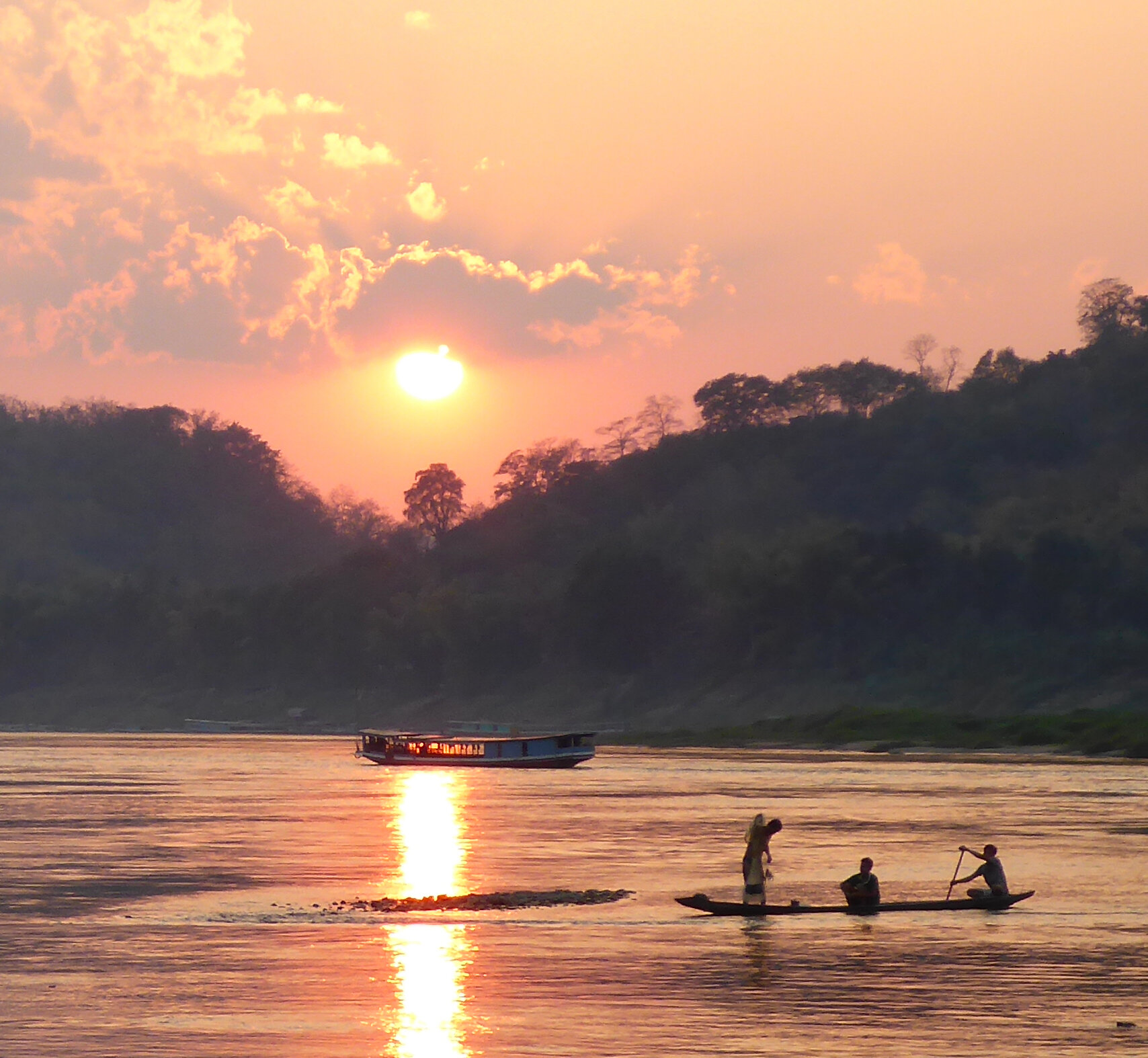






![รูปที่ 1. ผลการดำเนินงานของประเทศต่างๆในเอเชียตะวันออกเฉียงใต้ในดัชนีเสรีภาพสื่อมวลชน จัดทำโดย RSF[x] และ Global Freedom Index ข้อมูลโดย Freedom House[xi], 2020](https://images.squarespace-cdn.com/content/v1/575fb39762cd94c2d69dc556/1612328952335-787LSKZUG63IXXQ2XK2G/Copy+of+CN-Info-2102.png)





